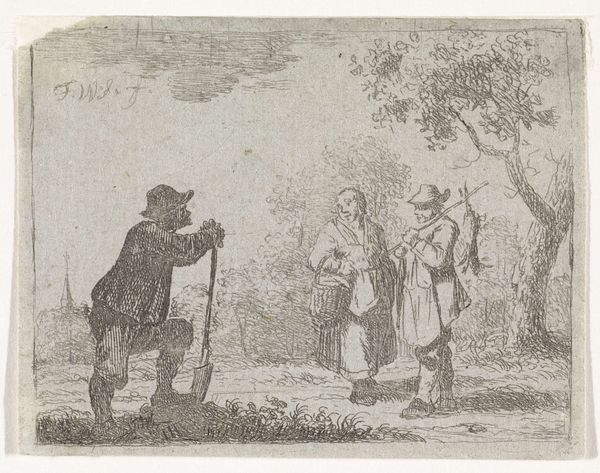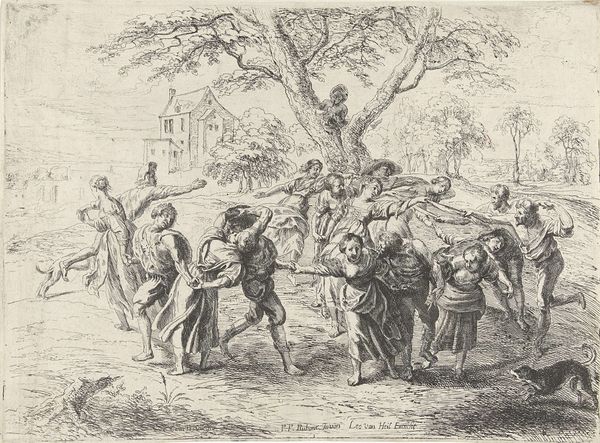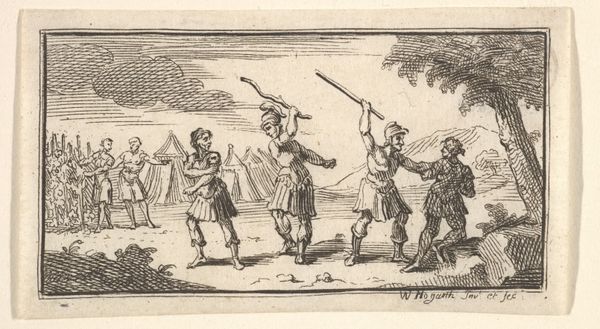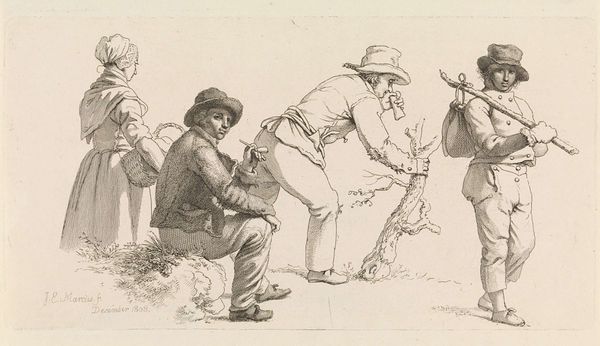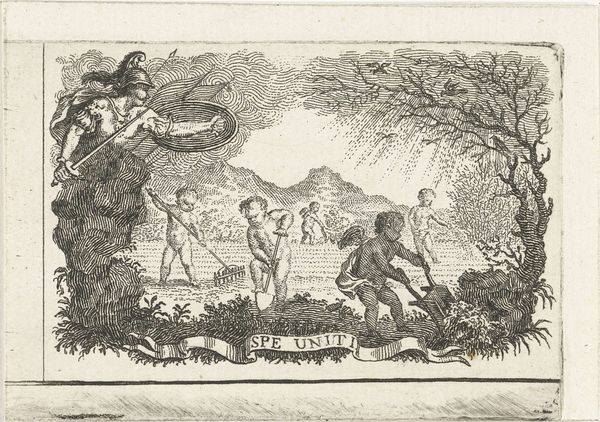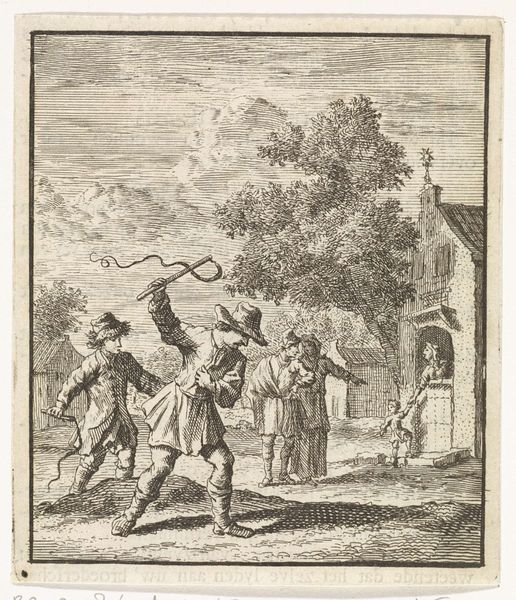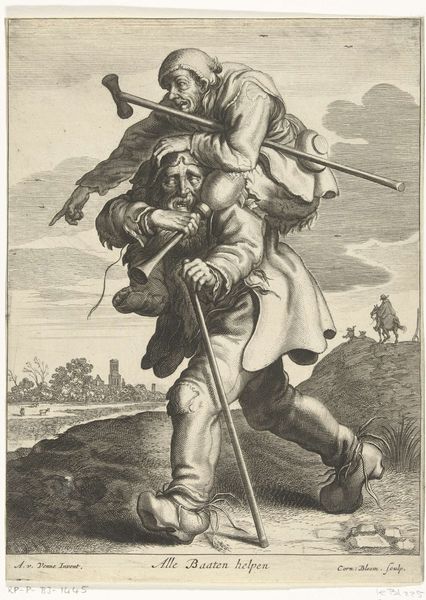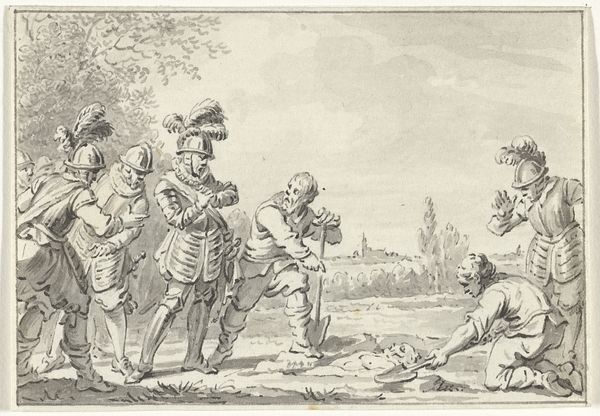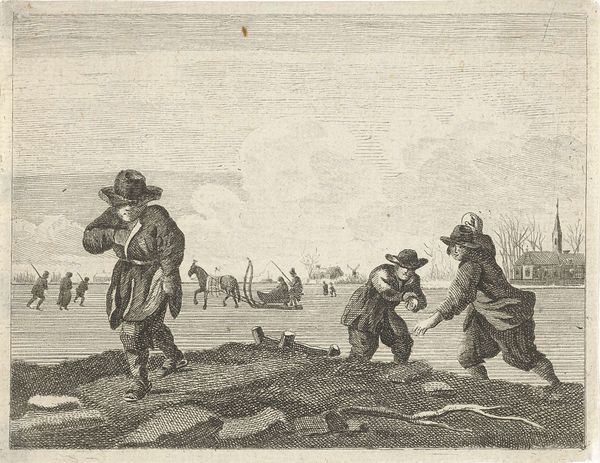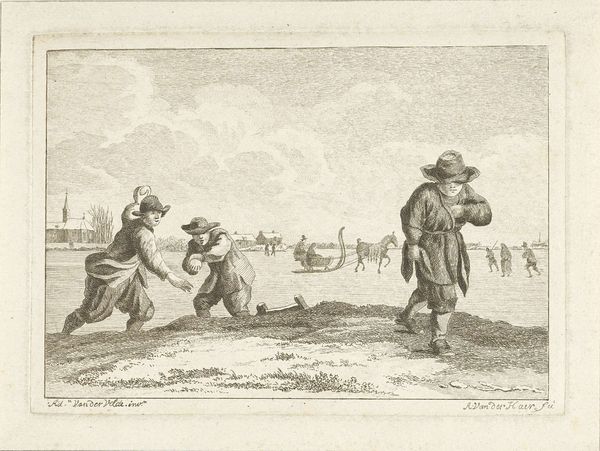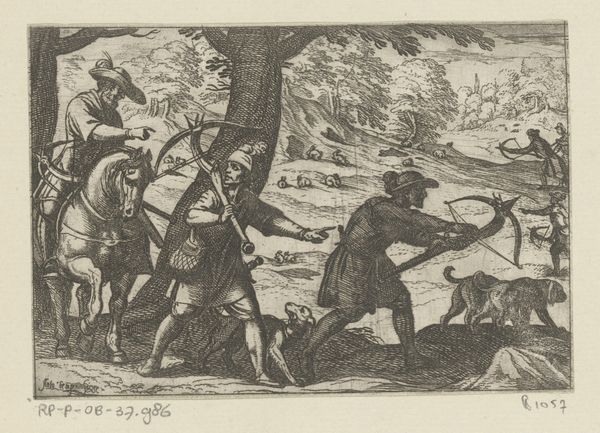
print, intaglio, engraving
#
narrative-art
#
baroque
# print
#
intaglio
#
old engraving style
#
figuration
#
genre-painting
#
engraving
Dimensions: height 81 mm, width 114 mm
Copyright: Rijks Museum: Open Domain
Editor: This intriguing intaglio print, titled "Jongen leidt drie blinden," which I believe translates to "Boy Leads Three Blind Men," was created in 1629. I am immediately struck by its almost crude production, a characteristic that perhaps accentuates its powerful narrative. What are your thoughts on this piece? Curator: It's vital to consider the means of its creation. The starkness comes not just from an artistic choice, but the very process of intaglio printmaking – the labor of carving, the specific properties of the metal plate used. How would this have been consumed and by whom? Was this disseminated among wealthy art collectors, or the emerging literate class as a mode of social commentary? Editor: That's a fascinating point! Thinking about who would have seen this originally. So you’re saying that rather than purely considering the aesthetic of Baroque style here, it might be valuable to dive more into the labor of the print itself? The work it takes to physically produce and then what segments of society were able to enjoy art and commentary via these affordable artworks? Curator: Precisely. Consider the consumption of this imagery. Who benefits, who is exploited in this scene, both literally and metaphorically? Is there a critique of a social structure at play or an appeal to social class’ tastes of art? Editor: That totally shifts how I initially interpreted the piece. The contrast of the skilled versus unskilled labor is really visible here too. It’s fascinating to consider it in the framework of production and social structure, rather than purely aesthetics. Curator: And seeing the art through the lens of material conditions also transforms your views on consumption and audience for artworks such as this. Editor: Exactly! It really highlights the material and societal layers that are involved in something that at first viewing feels… simpler, or even more raw. It adds a whole other depth. Curator: It encourages looking at the layers beyond the surface for context, labor, means and access!
Comments
No comments
Be the first to comment and join the conversation on the ultimate creative platform.
